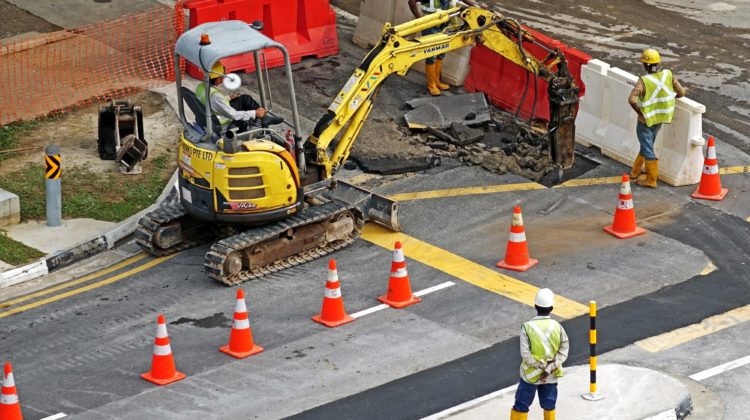
5 Types of Infrastructure Construction Projects
Did you know there are over 4 million miles of public roads in the United States that help carry goods and people every day?
Without that infrastructure, people would have a much harder time carrying out everyday activities. They’d also lose out on the lifelines that help avoid disaster and other emergencies. Roads aren’t the only infrastructure construction projects that matter, though. Luckily, we’re here to help you learn more about infrastructure projects and which ones have the biggest impact on your community.
Read on to learn more about what you need to know.
What Is an Infrastructure Project?
First, what is an infrastructure project?
They focus on the development and maintenance of services, facilities, and systems within a community. Like roads, they can be funded privately, publicly, or as a combined effort. The Infrastructure Investment and Jobs Act is expected to invest $550 million in infrastructure around the country alone, meaning a large impact on communities and the people within them in the years to come.
Roads aren’t the only thing infrastructure projects cover, though.
1. Aviation Infrastructure
Aviation infrastructure projects develop and maintain airports and airplanes. It’s a crucial part of the US transportation system, as more people travel by air here than in any other country in the world.
The overall state of this system is mixed, though. The Charlotte Douglas International Airport has contributed $231 million to renovate and expand the airport, adding 10 gates to Concourse A, and adding on to the lobby itself.
2. Bridges and Tunnels
Bridge and tunnel infrastructure oversees the costs of building and maintaining bridges and tunnels across the country. A lot of these structures across the country are considered to be deficient and in need of repair, though they’re not deemed unsafe for traffic.
Accomplishing this work can be difficult, though. It has to be completed over water, which differs a lot from working on land. Tunnels are similarly difficult, as they can integrate different parts of transportation networks.
They’re necessary for not only travel but also to carry water and wastewater from site to site. In some cases, they can also produce sustainable hydropower energy.
3. Road Infrastructure
Road infrastructure builds and fixes new streets, roads, and highway systems for both mass and local transit. They’re essential for granting greater transportation access to communities and parts of the country, but a lot of them are in need of repairs or expansion.
Many cities in the United States are growing, but some are finding the state of their roads can’t accommodate all the new traffic traveling over them, leading to troubles throughout different communities.
4. Subdivision Infrastructure
Subdivision infrastructure covers any and all infrastructure inside of neighborhoods, including things like:
- Entrance and exit gates
- Facilities
- Structures
- Guardhouses
- Stormwater management
- Roads, bridges, streets, etc.
Infrastructure in these areas covers the building of, renovation, care for, and even reconstruction of those structures. You can almost think of subdivisions as smaller cities. They need the same access that interstates and roads need, but they’re often privately funded and cared for.
It also covers the site development for these areas to be built. This is the first step to ensuring any project’s success, so it’s important to navigate the process of permitting, planning, analyzing, and developing carefully and correctly. Working with the right company is a great way to ensure any project’s success.
5. Sewer and Drainage Infrastructure
Construction waste management works to provide sanitary ways to store, treat, and eliminate hazardous materials. They help improve the environment, but some areas of the country cannot accommodate the volume of wastewater they have, meaning overflows into the ocean or other bodies of water.
Sewage and wastewater encompass solid and hazardous waste byproducts, like sewage remnants and other industrial leftovers. These are transported to designated landfills and hazardous waste facilities. Tanks, drip pads, and incinerators are then used to treat, recycle, and/or dispose of these materials in a safe and sanitary way.
Companies like Duke Energy and SustainRNG have partnered to come up with innovative ways to harness renewable natural gas made from methane on dairy farms. It would work to capture and process methane from farms to then be redistributed for use inside local communities.
Private vs. Public Construction
The distinction between public and private is an important one to make. Government agencies and private companies work both independently and in partnership to undergo these projects, and to improve overall conditions for any society’s living.
Private projects are funded and therefore owned by private organizations and companies. This includes homeowners, businesses, private hospitals, and also manufacturing facilities.
Public construction is usually funded by local, state, and federal governments. It includes things like public schools and government buildings.
Though these things might be separate, they work together to increase accessibility to water resources and safe transportation. They also work to improve communication technology and upgrade mass transit systems.
Though investing in these projects has decreased over the last few decades, governments are working to fund projects in order to stimulate much-needed growth in areas throughout the country.
Why Infrastructure Construction Projects Are Important
Infrastructure construction projects matter to communities because they help maintain order. They have a direct effect on a nation’s and community’s productivity, and also how much revenue they can bring in. They can also make a large impact on how much revenue a nation and families within it can make each year.
With subpar infrastructure comes disorder and potential trouble. That’s where we come in, though.
When you’re searching for a contractor for your next commercial project, keep Dixon Construction Partners in mind. Contact us when you’re ready to partner up.



